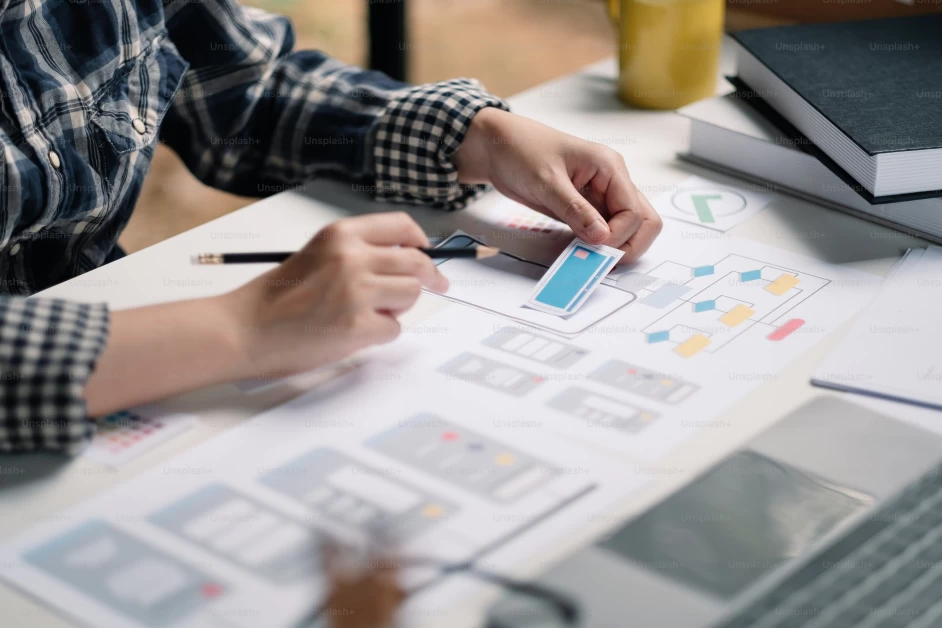Table of Contents
- Why is Graphic Design Important?
- Best Tips for Graphic Design
- 1. Research
- 2. Have a Plan
- 3. Brainstorm
- 4. Iterate
- 5. Choose the Best Color Scheme
- 6. Use a Smaller Color Scheme
- 7. Limit the Number of Fonts
- 8. Decide Upon the Message
- 9. Create a Visual Hierarchy
- 10. Include Icons
- 11. Create Contrasts
- 12. Keep It Simple
- 13. Focus on What’s Important
- 14. Harmonize
- 15. Use White Space
- 16. Use Space Between Elements
- 17. Embrace Boredom
- 18. Embrace Variety
- 19. Strive for Excellence
- 20. Apply Graphic Design Tips and Tricks
Graphic design is an essential skill for businesses in today’s digital age. Whether you’re designing for your startup, creating graphics for your Facebook page, or enhancing the visual appeal of any other platform, improving your graphic design skills can greatly benefit your projects. If you’re not an expert in graphic design or need some guidance on how to work effectively with designers, here are some valuable tips and tricks to help you get better at graphic design using software and apps.
Why is Graphic Design Important?
The importance of graphic design lies in its ability to create a cohesive brand identity for your business. It goes beyond just creating logos, websites, and business cards. Graphic design is a form of communication that enables you to convey the unique features and values of your brand to your audience. It plays a crucial role in telling the story of your brand and enhancing the perception of your products or services.
Effective graphic design saves time and money by enabling people to quickly understand and absorb information. It enhances the user experience (UX) of your products or platforms, leading to improved customer satisfaction. In today’s competitive business landscape, visual design is a key component of a successful business strategy. Professional graphic designers possess the skills and expertise to transform your digital presence and drive positive business transformations.
Best Tips for Graphic Design
To improve your graphic design projects, here are some important tips and tricks to incorporate into your creative process:
1. Research
Before diving into the design process, it’s essential to conduct thorough research. Analyze your target audience and gain insights into their preferences, needs, and expectations. Understanding your audience will help you create designs that resonate with them and effectively communicate your brand message.
2. Have a Plan
Develop a clear plan and strategy for your design project. Identify your target audience, outline the purpose of the design, and analyze how your competitors are approaching similar projects. Having a well-defined plan will keep you focused and enable you to make informed decisions. It’s also beneficial to have a backup plan in case you encounter any obstacles or challenges along the way.
3. Brainstorm
If you’re working as part of a team, engage in brainstorming sessions to generate ideas and ensure alignment among team members. Collaborative brainstorming can lead to innovative and creative solutions that cater to the needs of your target audience.
4. Iterate
Collect all the research and ideas generated during the brainstorming phase and extract the most valuable insights. Validate your ideas and refine them until you have a solid concept that aligns with your brand and resonates with your audience. Iteration is a crucial part of the design process and allows you to refine your ideas and create impactful designs.
5. Choose the Best Color Scheme
Selecting the right color scheme is crucial for creating visually appealing designs. Start with the basics, such as understanding the color wheel, color properties, warm and cold colors, color value, and color relations. These foundational elements will help you create a harmonious color theme for your design.
6. Use a Smaller Color Scheme
If you’re having trouble finding the perfect color scheme, consider using a limited color palette that complements your design. Look for inspiration in your surroundings and experiment with different color combinations to create unique and visually appealing designs.
7. Limit the Number of Fonts
Avoid the common mistake of using too many fonts in your design. Overusing fonts can make your design appear cluttered and unprofessional. Stick to a maximum of three fonts, unless there is a specific reason to deviate from this rule. Ensure that the fonts you choose are readable and align with your brand and design purpose.
8. Decide Upon the Message
Before finalizing your font choices, consider your brand and the purpose of your design. Ensure that the fonts you select effectively convey your message and are easily readable by your audience. Typography plays a significant role in communicating your brand’s personality and values.
9. Create a Visual Hierarchy
Understand the concept of visual hierarchy and organize the elements in your design based on their importance. Consider factors such as size and scale, color and contrast, typography, distance, proximity, alignment, and perspective. Incorporating these elements into your design will help guide your audience’s attention and create aesthetically pleasing UX designs.
10. Include Icons
Icons are powerful visual elements that can enhance the interaction between your design and your audience. Consider incorporating icons into your design to add visual appeal and improve user experience. Icons can be used for animation, forming clusters to create a new visual element, pairing with trendy design elements, or creating unique sketches.
11. Create Contrasts
Contrast goes beyond using light and dark colors. It encompasses elements such as shapes, sizes, fonts, and textures. Incorporate contrasts into your design to make it visually striking and engaging. Ensure that your design includes different shapes, types of fonts, dimensions of elements, complementary colors, and textures that create contrast and visual interest.
12. Keep It Simple
Simplicity is a fundamental principle of good design. Remember the saying “less is more.” Avoid cluttering your design with unnecessary elements. Focus on simplicity and minimalism to create designs that are clean, elegant, and impactful.
13. Focus on What’s Important
By keeping your design elements to a minimum and focusing on what truly matters, you can make your design stand out and effectively communicate your message. Avoid overcrowding your design with too many elements, as this can lead to confusion and detract from the overall visual impact.
14. Harmonize
Once you have determined the essential elements of your design, strive to create harmony among them. Use the principles and techniques mentioned earlier to harmonize your design elements and ensure they work together cohesively. Effective design creates a sense of unity and coherence, enhancing the overall visual appeal.
15. Use White Space
White space, also known as negative space, refers to the empty space around design elements. Utilize white space to create a balanced and visually pleasing design. It improves readability, provides symmetry and balance, and creates contrast within your design. Incorporating white space allows your design to breathe and enhances its overall aesthetics.
16. Use Space Between Elements
When designing your layout, ensure that you create sufficient space between elements. Use spacing to highlight important elements such as titles, buttons, services, forms, and icons. Adequate spacing improves visual clarity and makes it easier for users to navigate and interact with your design. Don’t forget to leave enough space for text to ensure readability.
17. Embrace Boredom
Embrace moments of peace and boredom as opportunities for creative breakthroughs. Sometimes, stepping away from your design and finding moments of stillness can spark new ideas and inspiration. Embrace boredom and use it as a catalyst for innovative design thinking.
18. Embrace Variety
Always seek new experiences and ideas. Each new experience provides a fresh perspective and can inspire new ideas in the future. Encourage everyone on your team to explore new concepts and techniques, as you never know where your next burst of inspiration will come from.
19. Strive for Excellence
Continuously challenge yourself to do your best work with every design project. Embrace constant professional growth and seek opportunities to improve your skills and knowledge. By striving for excellence, you can create high-quality designs that make a lasting impact.
20. Apply Graphic Design Tips and Tricks
Finally, make use of graphic design tips and tricks shared by experienced designers. Stay updated on the latest design trends and industry insights. Study successful design cases for inspiration and insights. Incorporate tips and tricks into your design process to enhance your skills and create exceptional designs.
In conclusion, graphic design is a crucial aspect of modern business. By following these tips and leveraging the power of software and apps, you can improve your graphic design skills and create visually appealing designs that effectively communicate your brand message. Start small, and with practice and dedication, you’ll be amazed at the progress you can make. Use these tips as a guide, and remember that you are ultimately the driver of your design projects. Choose the right development company to assist you in implementing these tips effectively and creating high-quality, unique designs. Best of luck in your creative endeavors!







